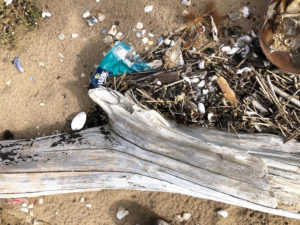
It can be found everywhere — from kitchens to emergency rooms to whale stomachs, plastic has become a part of almost every aspect of our lives. Our mass production of plastic has grown exponentially, and so has the amount of plastic pollution on our planet. Plastic now overwhelms oceans, landfills, and recycling plants across the globe. Every year, plastic kills over 100,000 marine animals and 1 million seabirds. It is estimated that by the year 2050, there will be more plastic in the ocean than fish (by weight). And it’s not just in marine animals. We ingest it too. New research shows that we may be consuming up to a credit card’s worth of plastic every week. But how did this plastic crisis come to be?
- 1907: The first ever cheap synthetic plastic, called Bakelite, is invented by Leo Hendrik Baekeland
- 1920s: Plastic’s popularity begins to surge, and it is used to make jewelry, golf balls, radios, and even textiles
- 1947: The first plastic water bottle is invented.
- 1950: The world produces 1.5 million tons of plastic.
- 1960: We produce 25 million tons of plastic.
- 1965: The plastic bag is invented.
- 1980s: Grocery stores start to switch over from paper to plastic bags. Around this time, people begin to realize that the amount of plastic being produced has become a very big problem, and so recycling starts to take off.
- 1990s: We become so reliant on plastic that it is a part of all aspects of everyday life. From phones, to kitchen gadgets and even plumbing, it’s become nearly impossible to exist without it. Not only that, but plastic makes its way into doctors offices and emergency rooms. X-Rays, surgical instruments, and artificial plastic joint replacements are all made possible by plastic.
So, cutting our plastic consumption is easier said than done…
Check back on Wednesday, June 10th for Part 2 of Stevie’s article, and to learn more about the United States’ recycling program.




